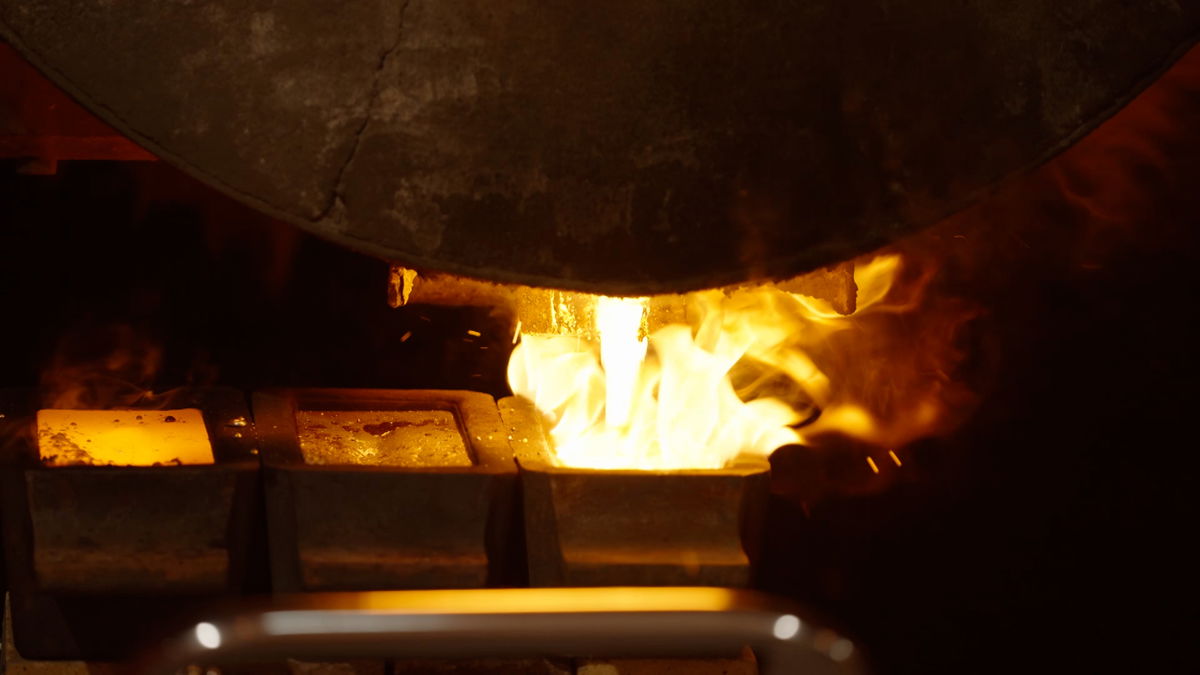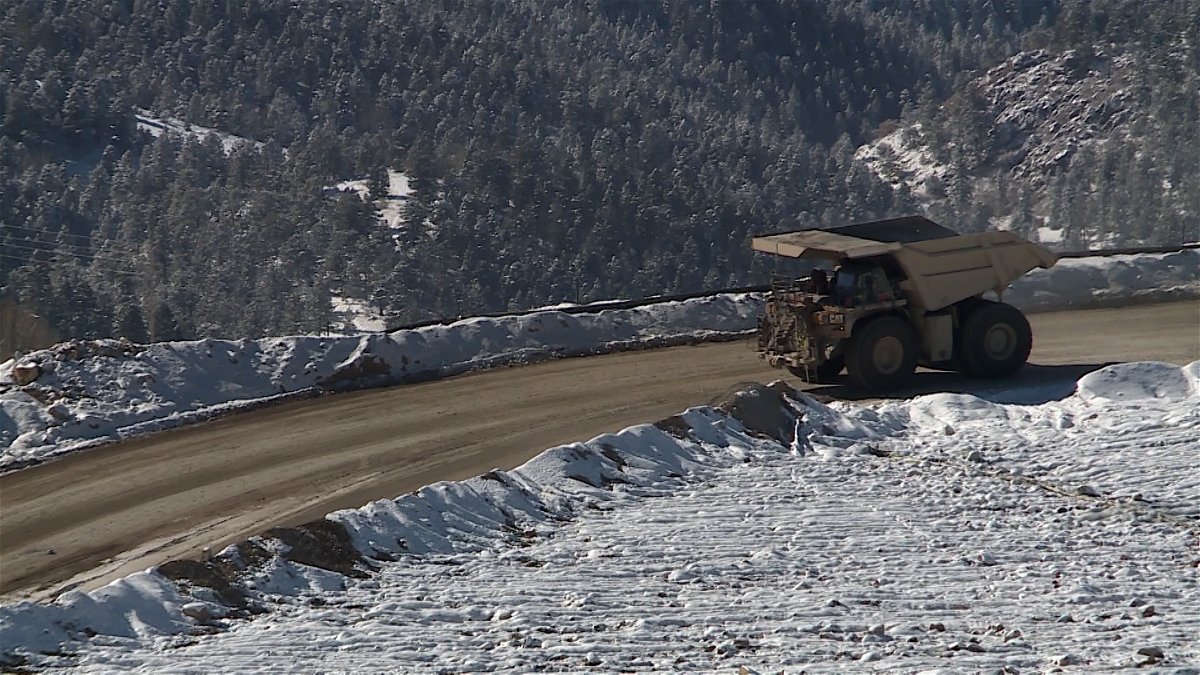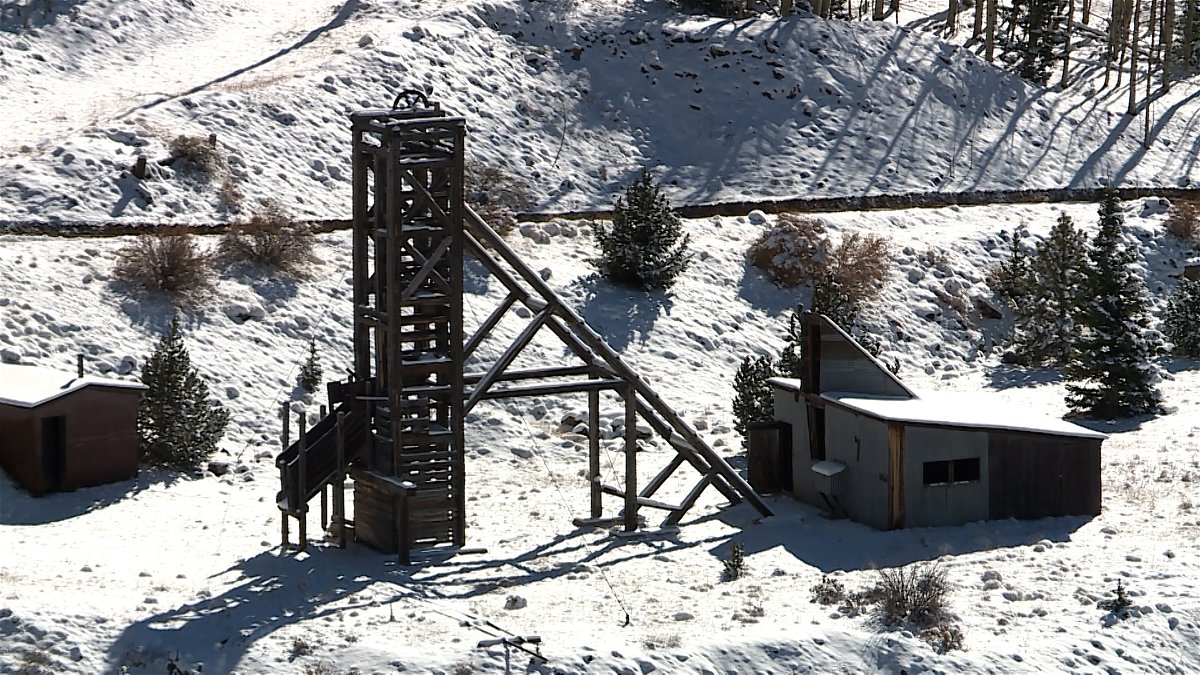Gold mining has rich history in Teller County
TELLER COUNTY, Colo. (KRDO) - Scientists believe it was approximately 35 million years ago when a volcanic eruption left deposits of gold just below the surface in Teller County.
It wasn’t until the 1800s that the precious metal was finally discovered, and it has led to a rich history ever since.
In 1901, the population of Cripple Creek peaked at around 50,000 as miners, investors, and supporting businesses flocked to Colorado to claim their piece of the newfound riches.
Gold mining was extremely dangerous, but also extremely profitable, and is credited for helping Colorado to develop as a state.
The population of Cripple Creek is far smaller, with a population of less than 2,000, but the Cripple Creek and Victor Gold Mine (CC&V) is still a cornerstone of the community and its economy.
It turns out the days of descending into deep dark mine shafts are over.

Today, it all happens on the surface and it's more about machines than men.
Several times a week, rock is blasted away from the walls, creating “benches” that resemble a wedding cake on the mountainside.
The ore that’s broken loose by the blasting is then loaded into giant “haul trucks” that carry about 250 tons at a time.
If the gold content is found to be high enough, it’s dumped into large leach fields, where a chemical mixture extracts the gold from the rock.

The gold is then separated from that liquid solution in large tanks before it’s heated to about 2,000 degrees and molded into small bricks called “doré bars”.

Those bars aren’t 100% gold, so they are then shipped off to be further refined into nearly pure gold, which is then used for everything from jewelry, dentistry, electronics, manufacturing equipment, or even the space helmets for astronauts.
The chemical mixture, meanwhile, is recaptured and reused to avoid contaminating the area.
In closed-loop facilities like this, all processing facilities are double or triple-lined with clay and then an HDPE liner, which monitors equipment below the mine to make sure that none of the waste product escapes.
Mike McCain is the Technical Training Superintendent at the local mine owned by the Newmont Corporation, based in Denver.
“I like what I do. I like mining,” he says with a smile.
McClain explained that the drivers of the massive haul trucks work 12-hour shifts, making 15-30 trips a day up and down the mountain.

It's a 24-hour-a-day operation that continues 365 days a year.
Over the course of a year, the local operation averages about 200,000 troy ounces, which are slightly larger than normal ounces.
It amounts to about 70 gallons, enough to fill a large bathtub.
That amount of gold carries a value of around $400 million, although the value has fluctuated considerably over the last few years.
After dropping to below $800 per ounce in 2008, it climbed to a record high of $2074.88 in 2022.
The current price of gold at the time this article was written was just over $2015, not far from setting a new record.
A Newmont spokesperson, however, cautions that most of that is used to cover all the manpower and equipment required to produce it.
“People always think, you know, 'Oh you're a gold mine, you have endless amounts of money’,” explains Katie Blake, “but the reality is the cost to run this place and actually produce the gold is significant.”
Ironically, even with a much faster pace of production that can sift through tens of thousands of tons in a 12-hour shift, the amount of gold produced today is still roughly half the amount produced by those early miners 120 years ago when it was much easier to find and extract. However, it's enough to support nearly a thousand direct and indirect jobs for Newmont and its subcontractors.

“We're as busy as we've ever been,” says McCain.
McCain began here more than 32 years ago and believes the local mine will continue providing an economic future for the area for many more decades.
“I have grandkids, and maybe they'll want to be miners one day,” he says.
Newmont currently has a permit to dig through 2031 and continue processing the removed ore through 2042. At that point, the operation would begin the closure and reclamation stage to restore it to its original state by 2050, which would be followed by a five-year monitoring period.
However, Blake pointed out that work is already underway to extend the permit and shift all of those dates back 5-10 years.

Newmont also maintains a bond to serve as an insurance policy, which would pay to clean up and restore the mine in the event the company couldn’t successfully complete the process on its own.
The mine's owners have also spent millions to preserve its history by restoring and displaying some of the original equipment used for mining in the region, scattering the structures throughout the perimeter for visitors to explore, including the pieces adjacent to “Rita”, the state’s newest troll sculpture that now sits on land previously owned by Newmont.

Newmont has also created several self-guided tours for people to learn about the mine and its history.
While the mine has plenty of gold still to be mined, its ownership has become a topic of recent headlines.
In early November, the Newmont Corporation acquired several additional mines from Newcrest.
According to Blake, this was the largest transaction in gold mining history and a huge milestone for Newmont and the growth of the global company’s portfolio.
However, CEO Tom Palmer told the Wall Street Journal that in order to generate cash to develop some of the company’s newer and larger mines, it might sell some of the smaller less-producing mines, and that could include the CC&V mine in Teller County.
If the local mine were to change hands, the permits would change hands as well, meaning the new company wouldn’t have to halt work while applying for new ones.
When asked whether the current workforce would have to re-apply for their jobs with a new company, a spokesperson replied, “We cannot speculate how that process may unfold, because it is not happening.”
